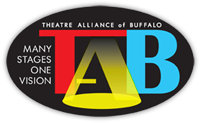 |
| Search |
|
|

|
 |
Preservation
It appears to many like minded individuals in towns other than Lancaster that the Army Corps of Engineers (ACOE) will grant a permit to destroy or fill in a wetland under nearly any circumstance – especially following the SWANCC federal guideline that the waters need to be connected and/or navigable.
If the wetlands appear to be “isolated” during dry seasons they just don’t fit the bill for being interconnected or considered connected to a navigable body of water and therefore not worth protecting. Future flooding and drainage issues and house stability are not worth consideration because developers have failsafe stormwater detention and release designs planned.
The New York Wetlands Bill, passed by the Assembly for the third straight year, but kept off the Senate floor for vote by Majority Leader Joseph Bruno, would lower the state jurisdictional threshold from 12.4-acres of wetland to one acre.
Wetlands under one acre that are adjacent to other waterbodies, or of significant local importance would also be regulated; change the basis for jurisdiction from whether a wetlands is mapped to whether the land at issue meets the scientific criteria for wetland designation; eliminate the current classification system in Environmental Conservation Law Section 24-1305, which undervalues riverine and forested wetlands, the primary wetland type in many parts of the State and change the use of wetlands maps so that they are used to educate the public about the location of wetlands rather than for regulatory purpose.
The weakening of the Clean Water Act and the failure of New York State to empower the Department of Conservation (DEC) to act for wetland protection on parcels less than 12.4-acres in size favors a development industry that already seizes on every opportunity to circumvent federal and state regulatory requirements and guidelines.
Addressing Lancaster Town Board (Wendell Commons Patio Homes)
When addressing the Lancaster Town Board this past Monday evening, this writer made the following comments:
It is unfortunate Council Member Donna Stempniak is not present this evening to hear the following comments. Fortunately, Bob Harris of William Shutt & Associates (Town of Lancaster Engineering consultant) was present and was commended for the fine services he has been providing the town.
Several months ago, during a conceptual development plan brought to the Town Planning Board, the developer’s (Kulbacki) attorney (R. Lorrigo) was asked by Stempniak whether there were any wetland on the site. She was informed that there were no wetlands present.
At their next appearance before the planning board on June 21, 2006, Chair Stanley Keysa read a correspondence that the board had received that very same day from the Department of Environmental Conservation (DEC). The correspondence referred to several environmental concerns the Department had with the project proposal.
Shortly thereafter, Stempniak asked Mr. Lorrigo what made him believe there were no wetlands on the site. Lorrigo referred to his engineer who was present and asked him what led to his belief there were no wetlands on site. The engineer responded that he had walked the site, did not see much standing water and although he is not an expert in wetland oil or vegetative indicators, he believed there were no wetlands on the site.
The DEC correspondence differs with the project engineer’s determination. They state that approximately 20 percent of the site (approximately 6 acres) is located on hydric soils and about 90 percent of the site is shown as federal wetland on the National Wetlands Inventory Maps.
The DEC suggested that once the wetland delineation is completed, the wetland (if state jurisdictional size) boundary should be surveyed to determine its location relative to the proposed project.
The DEC correspondence also declares a portion of the site appears to be within an archeologically sensitive area, that there exists the possibility that the threatened Yellow Giant-Hyssop (Agastache nepetoids) species is on site and requests a determination from the town why the proposed subdivision will be reviewed and managed as an association. “Why is Lancaster accepting this form of development,” asks the DEC?
As such, there were a lot of questions that were not asked by the planning board that should have been asked. The DEC’s environmental concerns led them to deny “lead agency” status for the town and to request a meeting with the project sponsor and project consultants, the Town of Lancaster, Erie County Health Department and the Army Corps of Engineers (COE).
The DEC also stated in the correspondence: Please recognize that no land disturbance should occur on this property prior to the SEQR process being completed and issuance of any federal, state or local permits that may be applicable.
I would hope that in the future the Town and Planning Boards would put some onus on the developers to provide documentation that a wetland delineation has been performed instead of just accepting their statement that no wetlands exist on the site and/or that only “isolated wetlands exist and are of such size and/or nature that they warrant no action or can be filled with a general permit.
Too many times developers have come into our town with wetland delineations performed by “hired guns” who underestimate the size of wetlands to such obvious extent that citizen groups had to hire their own experts to prove them wrong – Gateway Center (Transit & William) and Windsor Ridge. Yet the town accepted the project sponsor’s presented delineation. The onus should not be on the citizenry to protect wetlands.
I heard Planning Board member Rebecca Anderson one time state, “The town should get some spine and do a better job of protecting our environment. We could even be more stringent in protecting our environment than the DEC.” That shpuld be the town's goal.
People who come before the board and oppose certain conditions in draft proposals are not anti-development. Far from it! As citizens, we have rules and regulations we have to follow. Developers should have to abide by the same standards.
There is flap going on in Amherst right now on the illegal removal of trees by a developer in Amherst. Residents had to contact Supervisor Satish Mohan to stop the activity. No permits were issued to conduct the activity. The developer takes a slippery slope approach by saying it’s his land and he is thinning out the herd. Nonsense! It will be interesting to see whether the developer breached the wetlands that are on site, as is now being rumored.
Developers were stopped from excavating illegally in Lancaster several times. Two of the more noteworthy events occurred at the Gateway Center and Pleasant Meadows projects. Illegal tree removal and excavation began at Gateway Center and proceeded into the wetlands on site. Only when the Building Inspector was contacted and by threat of a court ordered injunction, did work stoppage occur.
When wetlands are destroyed, the opposition’s position to challenge a project based on wetland disturbance becomes moot unless legal action is pursued. I therefore beseech the board to act appropriately for the best interest of the community and environment.
Other comments
I am tired of developers coming into our town, purchasing swamplands and having their arrogant attorneys tell us they can get the regulatory permits to do anything they want because its their property.
The town has to take more responsibility in acting to protect resident and environment best interests over that of the developers and special interest groups.
How hypocritical is that for the developer who owns the property on Millersport Highway to say he is being shafted because of the Town of Amherst’s interest in rezoning his property from GB to whatever to prevent the building of a Wal-Mart at the location. Developers seek and get rezones to develop in their best interests all the time.
I am sure the residents of Amherst will not be under served if a Wal-Mart did not come to their town. Why is there no Wal-Mart store going into the City of Buffalo where the poor are being under served and taken advantage of? That 5-7 percent savings that customers could realize by shopping at China’s best friend would be appreciated.
The answer is so obvious it needs no stating. But then, the free market is really all about making money, not worrying about the underclass; often times the underclass is exploited in the process. The individuals who really need a Wal-Mart generally live the farthest away from one.
Lastly, it is not surprising that in their correspondence the DEC asks for an explanation as why the proposed subdivision will be reviewed and managed by an association. Why indeed? Is it because the stormwater detention plan calls for a wet pond and the town will no longer accept wet pond conveyance and maintenance costs?
So, lets turn it over to the residents who will also pay to maintain their private roads, infrastructure etc. And as they are not seeking Condominium Law 339-y tax reduction consideration, the town wins as well.
© Copyright 2023 - Speakupwny.com
hosted by Online Media, Inc
Buffalo Web Design and Web Hosting
Top of Page
|
|
 |
Preservation
Latest Headlines
|




|
Buffalo Web hosting and Buffalo Web Design By OnLineMedia, Inc
www.olm1.com
Part of
www.onlinebuffalo.com
|



